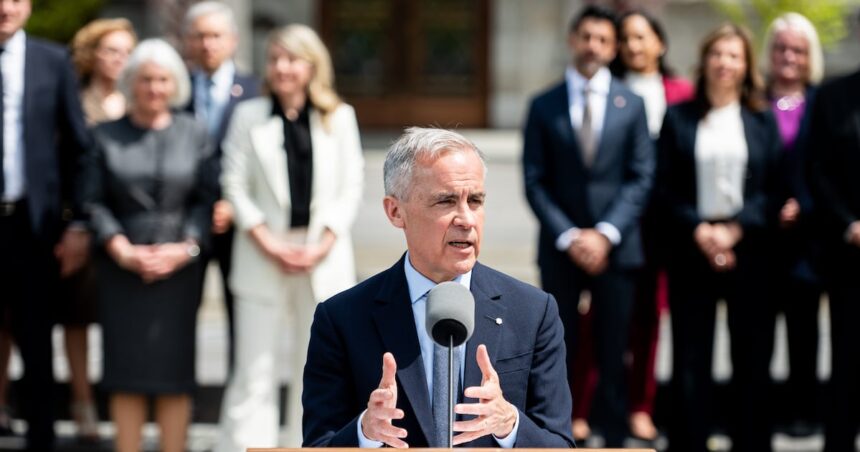Amid swirling speculation about potential parliamentary maneuvers, Prime Minister Mark Carney has firmly rejected suggestions that his Liberal government is actively courting opposition MPs to cross the floor and secure a majority government. The pointed denial comes as Ottawa political circles buzz with rumors of behind-the-scenes negotiations following the Liberals’ recent electoral success.
“We have a clear mandate from Canadians,” Carney stated during a media availability following a cabinet meeting yesterday. “We’re focused on delivering on the commitments we made during the campaign, not on parliamentary arithmetic or chasing floor crossers from any party.”
The Prime Minister’s comments address growing speculation that Liberal strategists might be targeting disaffected Conservative or NDP members to strengthen their parliamentary position. With the Liberals currently holding 169 seats—just one short of a majority in the 338-seat House of Commons—even a single floor crossing would dramatically alter the power dynamics on Parliament Hill.
Political analysts note that such denials are standard practice, regardless of actual backroom discussions. “Prime Ministers rarely admit to pursuing floor crossers publicly, even when it’s happening,” explains Dr. Eleanor Simmons, political science professor at the University of Toronto. “The optics of appearing to ‘poach’ elected representatives can backfire with voters who chose those MPs based on their party affiliation.”
The Conservative opposition has been vocal in their skepticism of Carney’s denial. Opposition Leader Pierre Poilievre suggested during a press conference in Calgary that “Liberal operatives are absolutely making calls to our caucus members, promising cabinet positions and other perks.” When pressed for evidence of such claims, however, Poilievre declined to provide specific examples.
Historical precedent for floor crossings in Canadian politics is well-established. Former Prime Minister Stephen Harper benefited from Belinda Stronach’s high-profile defection from the Conservatives to the Liberals in 2005, while more recently, Leona Alleslev crossed from the Liberals to the Conservatives in 2018, citing concerns over the government’s handling of economic files.
Despite Carney’s dismissal of floor-crossing rumors, the parliamentary math remains precarious for the new government. The slim margin means every vote on contentious legislation could require careful negotiation with opposition parties, particularly the NDP, whose 28 seats potentially offer a more stable path to passing legislation than individual floor crossings.
“The current seat distribution actually gives smaller parties significant leverage,” notes parliamentary affairs analyst Martin Richardson. “The NDP or Bloc could extract substantial policy concessions in exchange for supporting Liberal legislation—potentially more valuable than recruiting individual members to cross the floor.”
Carney emphasized his government’s willingness to work collaboratively with other parties, stating that “Canadians elected a Parliament where cooperation is necessary, and we take that seriously.” This collaborative approach marks a potential shift from the more partisan atmosphere that characterized the final years of the previous Parliament.
Financial markets have responded cautiously to the political uncertainty, with the Canadian dollar showing slight volatility as investors assess the stability of the new government. Business leaders have expressed hope that the need for cross-party cooperation might actually moderate policy initiatives and reduce regulatory uncertainty.
As Canadians adjust to their new government, a fundamental question remains: Will Carney’s pragmatic economic approach translate into effective political management of a fractious Parliament, or will the temptation to secure a majority through floor crossings ultimately prove too strong to resist?











